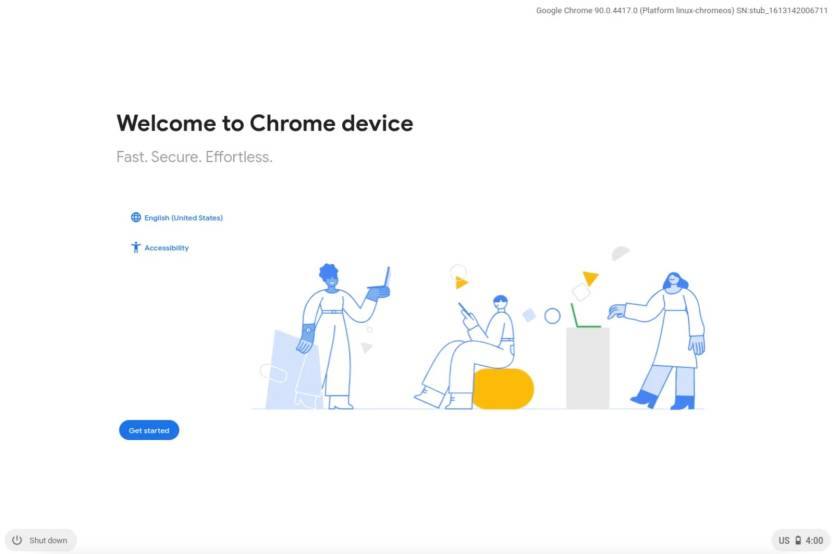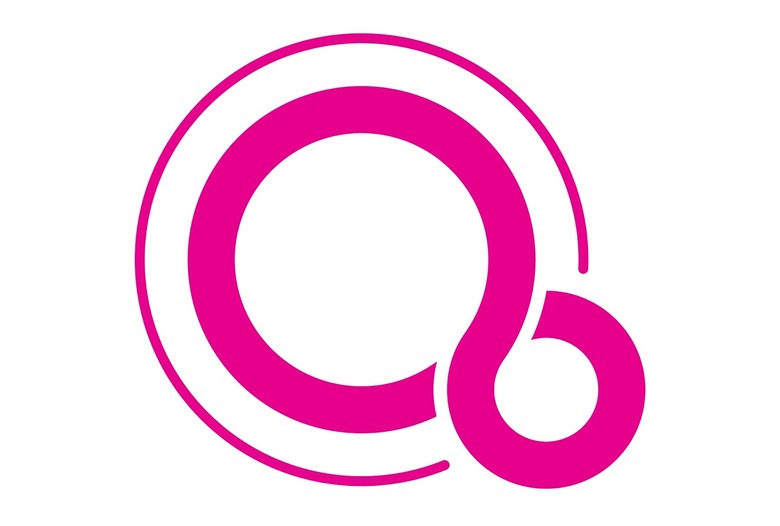Google Might Have Quietly Teased The OS That Will Replace Android
- A newly discovered welcome screen design for Chrome OS contains clues that Google is looking toward a future where the same OS could work on multiple types of devices.
- Google is developing a unified operating system to replace and unify Android and Chrome called Fuchsia.
- The new welcome screen message would certainly fit with Fuchsia, an OS expected to run on smartphones, tablets, PCs, and devices with no screens in the distant future.
Android 12 is now available as a developer preview, which the very first beta version of the new operating system. That's certainly exciting for developers and users who like to install the latest Android release from Google, no matter how unfinished it might be. And Chrome OS just passed a significant milestone recently. Google's desktop operating system surpassed macOS, becoming the world's second-largest PC operating system.
Windows still dominates the charts, and the pandemic might have impacted Chrome sales. But it's an achievement nonetheless. But there's a third operating system that Google is developing for the future, and it's more exciting than Android and Chrome combined. And Google might have quietly teased it again.
We've been talking about Fuchsia for years now, and Google has confirmed its existence without revealing what it can do or when it'll be here. Fuchsia would run on any device, no matter its size or display type — it would also run on gadgets that don't have screens. Fuchsia would support instant software updates just like iOS and macOS, as well as better privacy and security protections, again, like what's available on iPhone and Mac. And Fuchsia will still run all of the existing Android apps so that transitioning from Android (and Chrome) to Fuchsia shouldn't be a hassle. That's the gist of Fuchsia rumors, although it's unclear what Google's vision is for Fuchsia.
This brings us to a welcome message for Chrome OS gadgets that Chrome Unboxed found in a Chromium Bug Report:

New Google Chrome OS welcome message found online.
The new "out of the box experience" (OOBE) splash image could be part of the initial setup that Chrome users would see. There's nothing unusual in it at first sight. The graphics are larger than usual, and that's a great thing considering that Chrome OS powers laptops mostly. The slogan has also been slightly changed from "Speed. Security. Simplicity" to "Fast. Secure. Effortless."
But there are a few unusual details. The first one is the welcome message. It says "Welcome to Chrome Device" instead of "Welcome to your Chromebook" or "Welcome to your Chrome OS device." That might be just a typo. After all, Chrome is the browser, and Chrome OS is the operating system. But if you also pay attention to the people in the graphic, you'll notice a few unusual use cases.
Of the three people using the Chromebook, only one appears to be working on a Chrome OS laptop. The other two are portable devices that are held in hand. That's not exactly the kind of Chrome OS experience that Google has envisioned.
But Chrome OS doesn't work on smartphones or tablets. That's what Android is for. So why would Google even test this particular splash screen? Why use two details that seem to indicate that Chrome OS could work on other types of devices?
As the blog points out, Google used similar imagery for a different purpose. When Google launched the ChromeOS.dev website, the site featured the following image, suggesting that the same app would run on any device, whether it's a smartphone, foldable, tablet, or Chrome OS laptop. The animation is still there.
However, that's a different thing, as we're talking about Android apps that can run on all of those devices.
Getting back to the new OOBE language and visuals, they could signify that Google is looking forward towards a future where the same operating system might work on various devices, including foldable and iPhones. It doesn't have to be called Chrome OS. It could be Fuchsia.
This might all be wishful thinking. But anyone keeping track of Fuchsia traces would easily make the same connections when seeing the proposed images above. It's unclear how long Fuchsia will take to reach commercial devices. Also, it's unclear when that particular welcome message will be used inside Chrome OS. But that Chromium Bug tracker features various examples of the same graphic, suggesting support for all sorts of resolutions.
